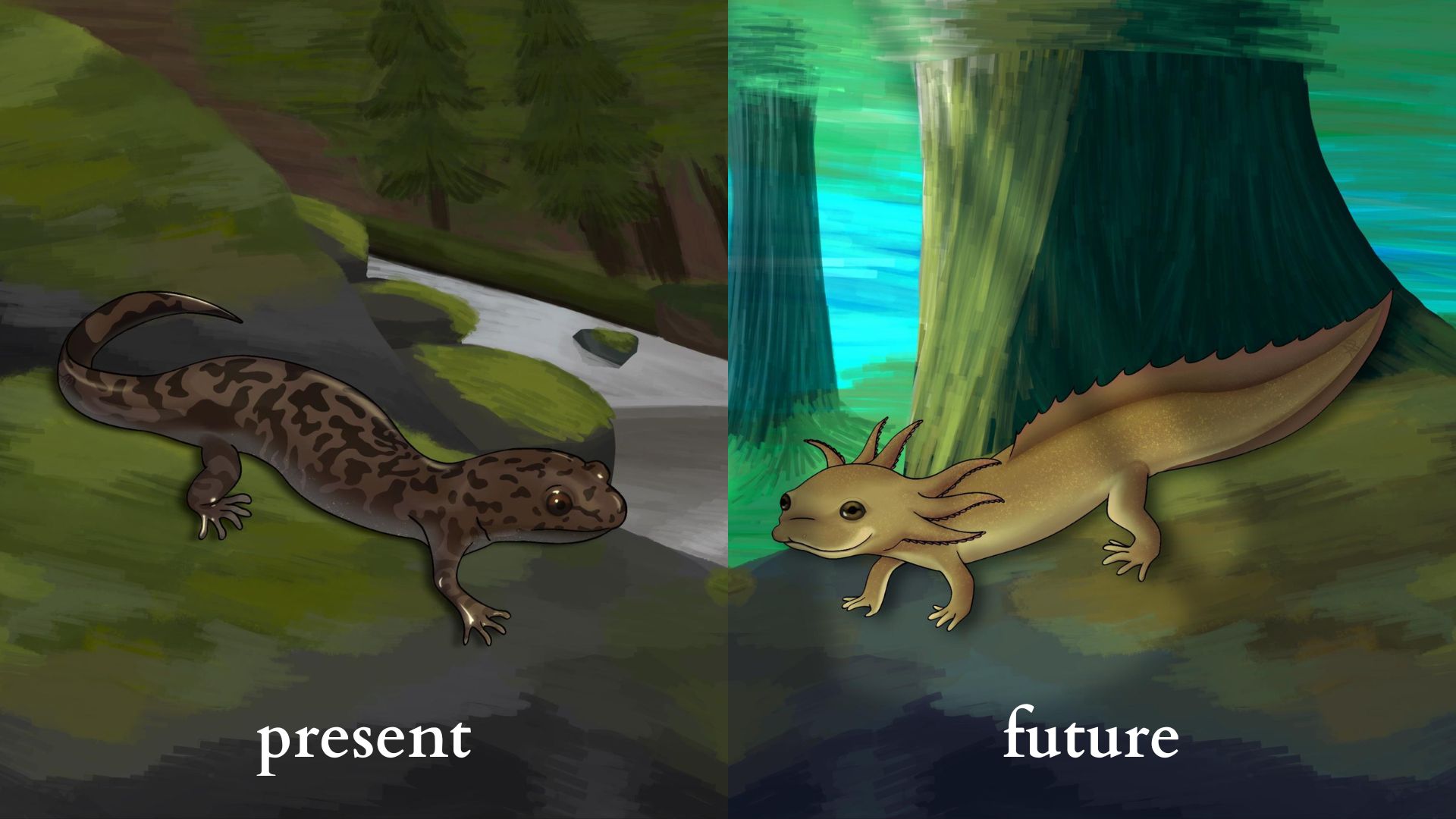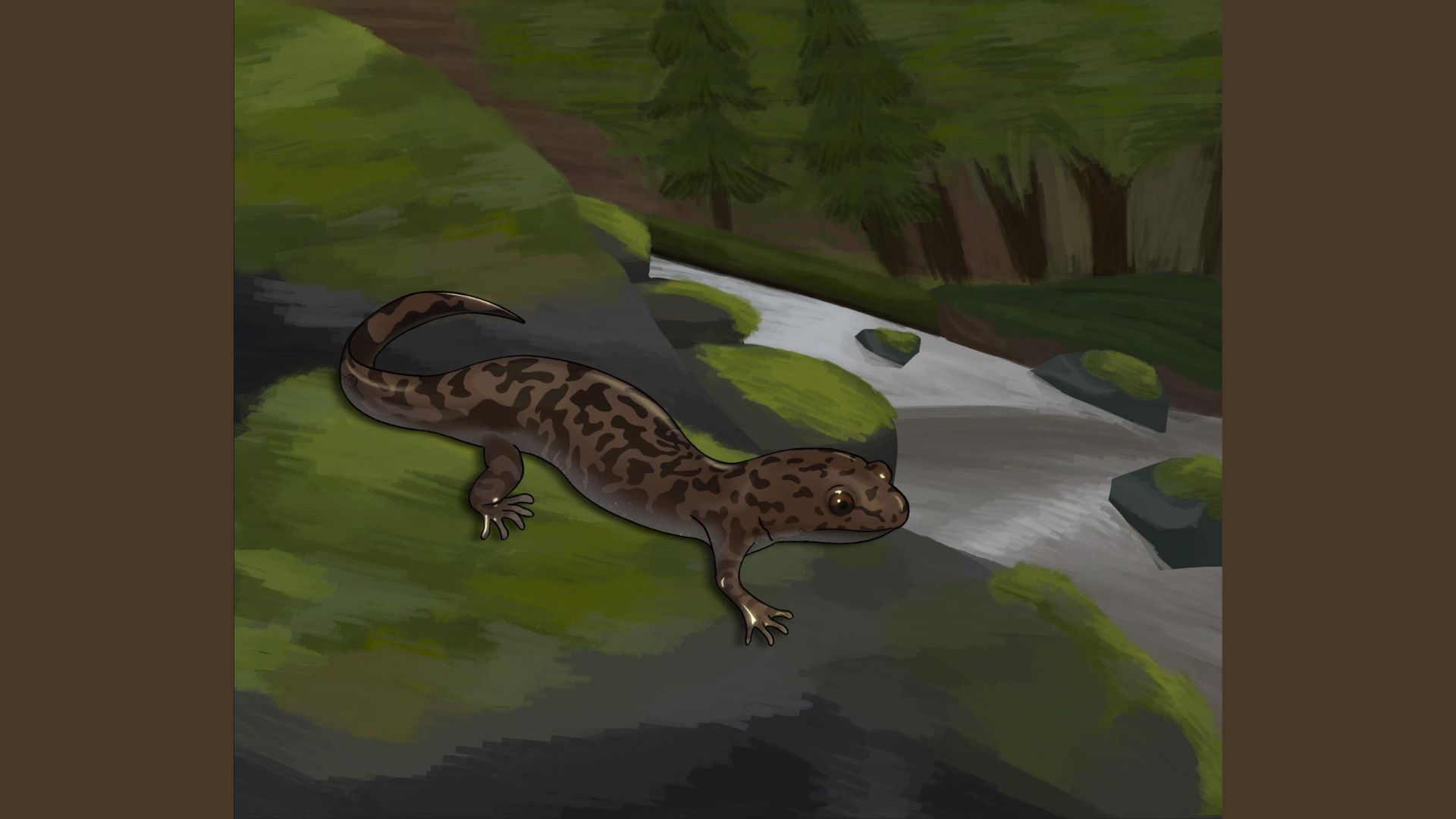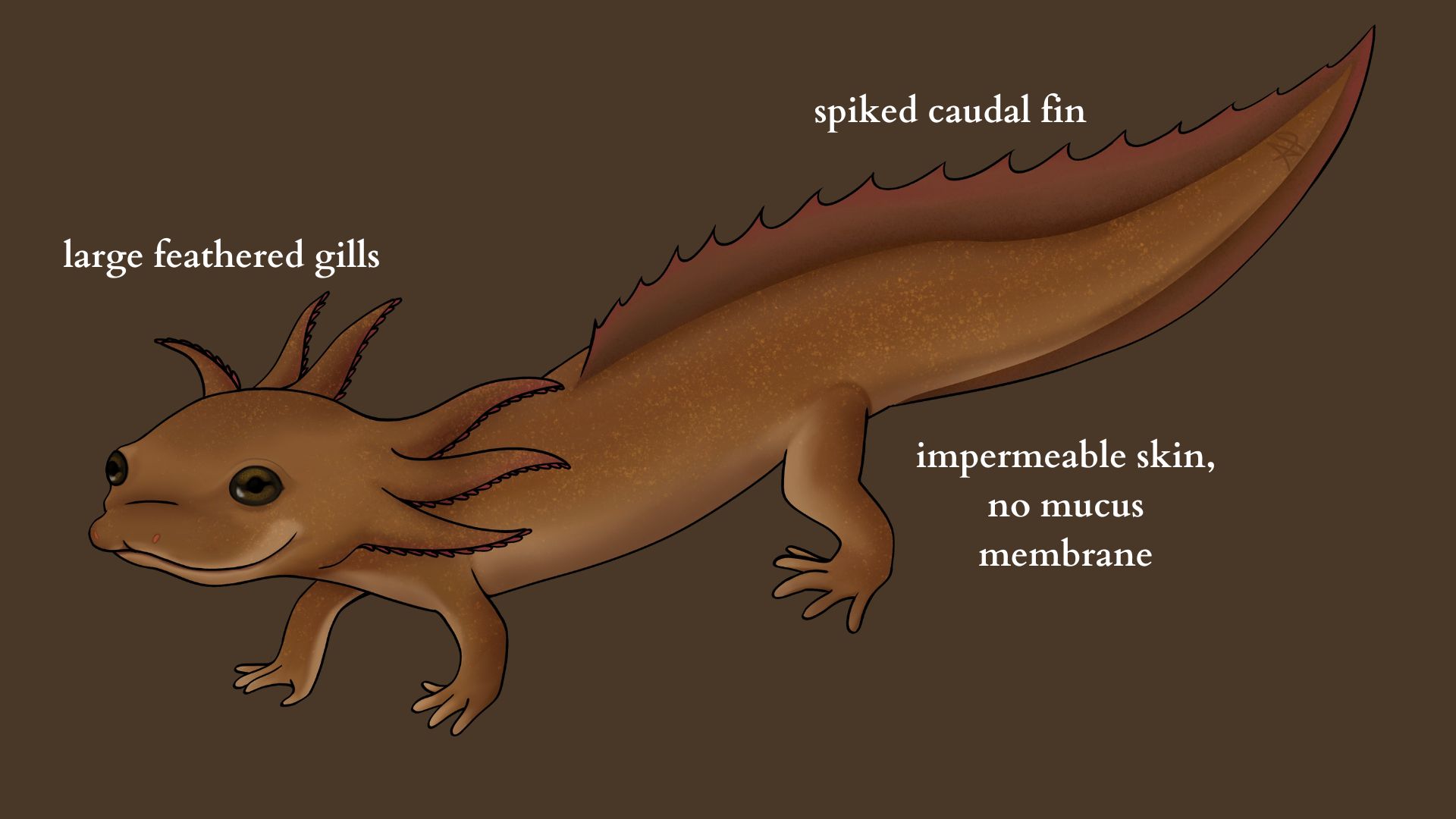In the flourishing temperate rainforests of the Pacific Northwest lies the elusive and slimy coastal giant salamander. Salamanders live in freshwaters as juveniles until they metamorphose into a land-dwelling form, shedding their gills and developing lungs. However, their environment is vulnerable to floods from rising seawater levels. To adapt, coastal giant salamanders must always express neoteny, a mechanism that allows them to forgo metamorphosis and keep their aquatic features. Their gills would become larger to increase gas-exchange efficiency due to warmer waters, which retain less oxygen. The new predatorial fish present would warrant the need for defenses, such as spiked fins to ward them away. However, the biggest obstacle they’d face is the salinity of seawater, which would cause them to promptly dehydrate as their skin absorbs it. To bypass this, their skin would become impermeable. With these adaptations, the salamander may stand a chance against the climate change threats.
Contact us
Thank you for your interest in contacting Future Engineers. We look forward to connecting with you!
General Inquiries
support@futureengineers.orgSponsorship Inquiries
sponsor@futureengineers.org



